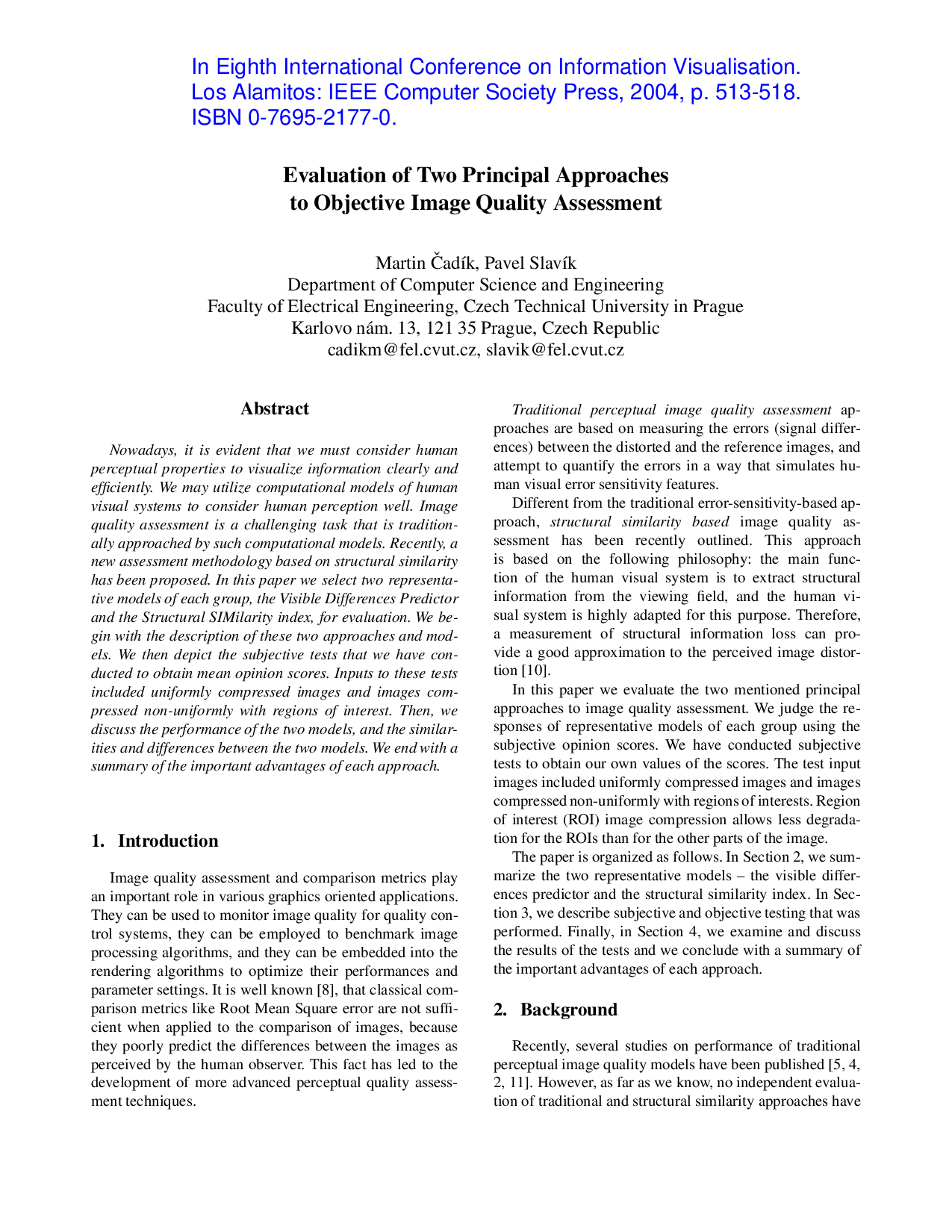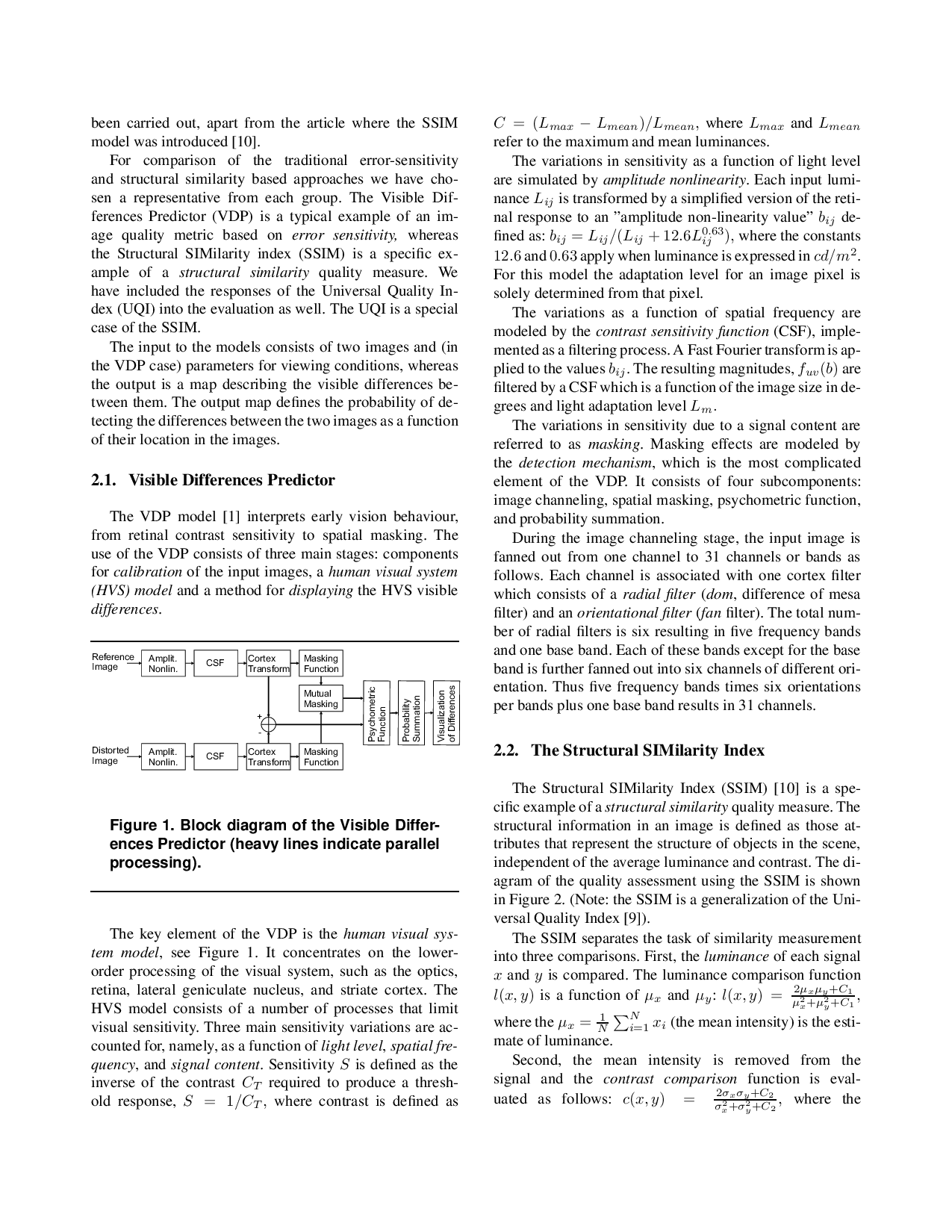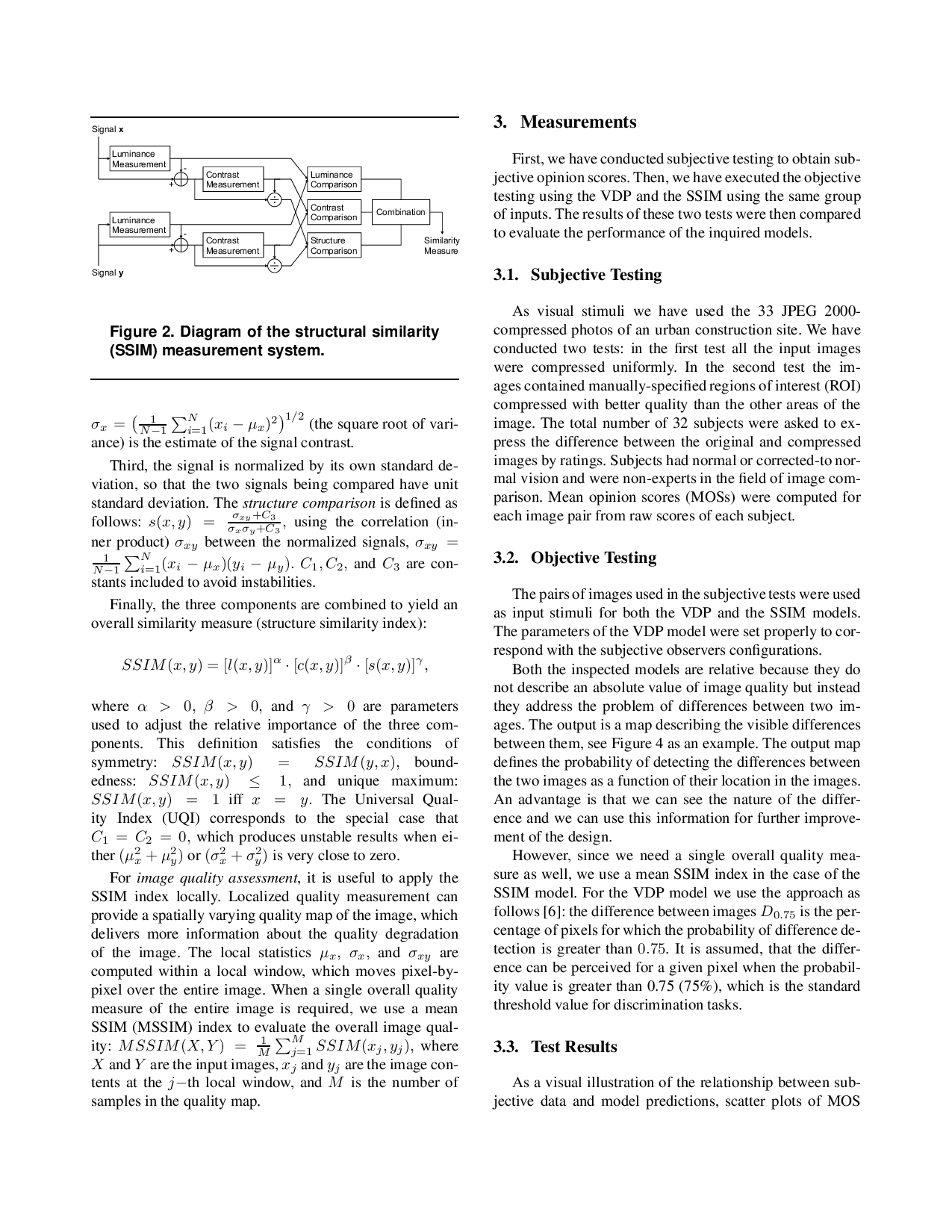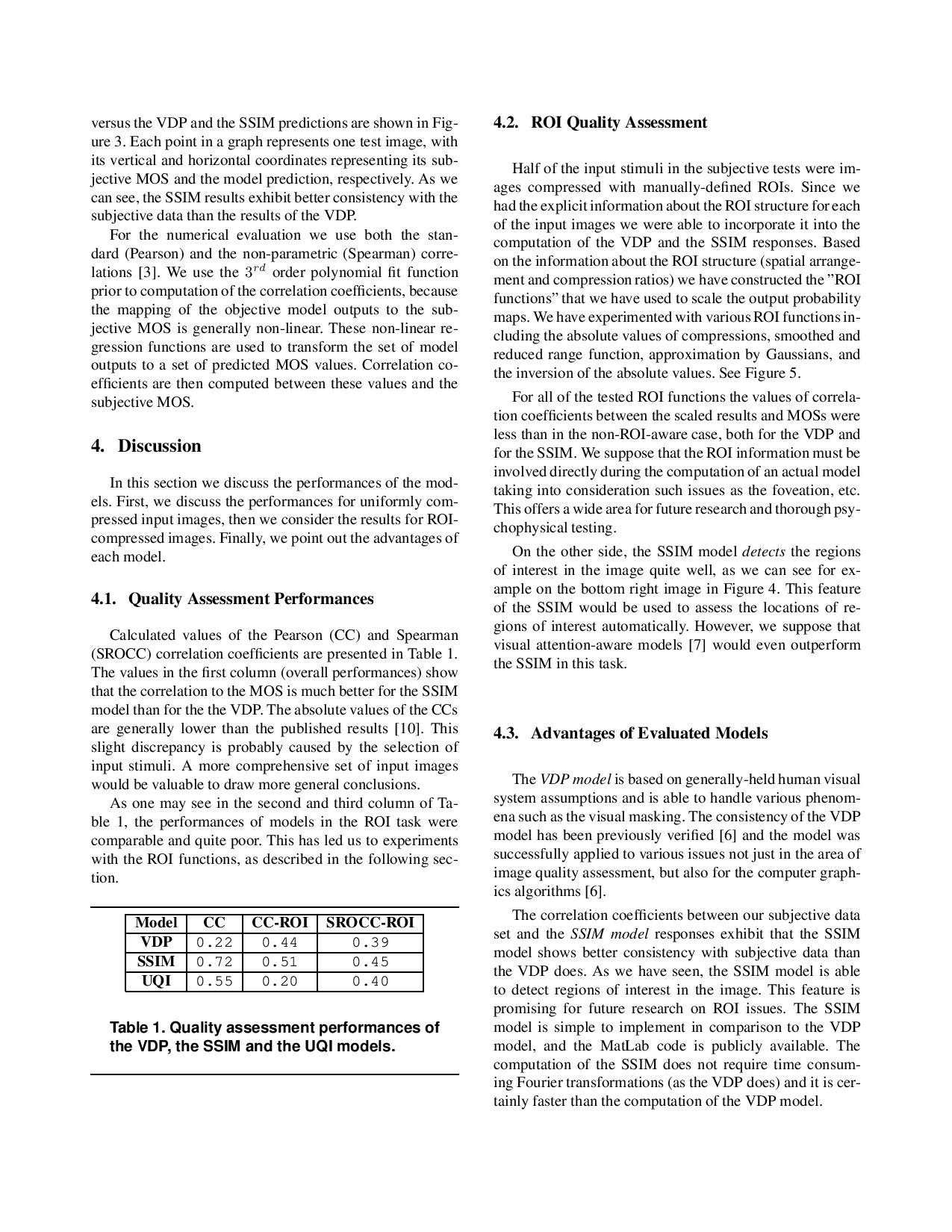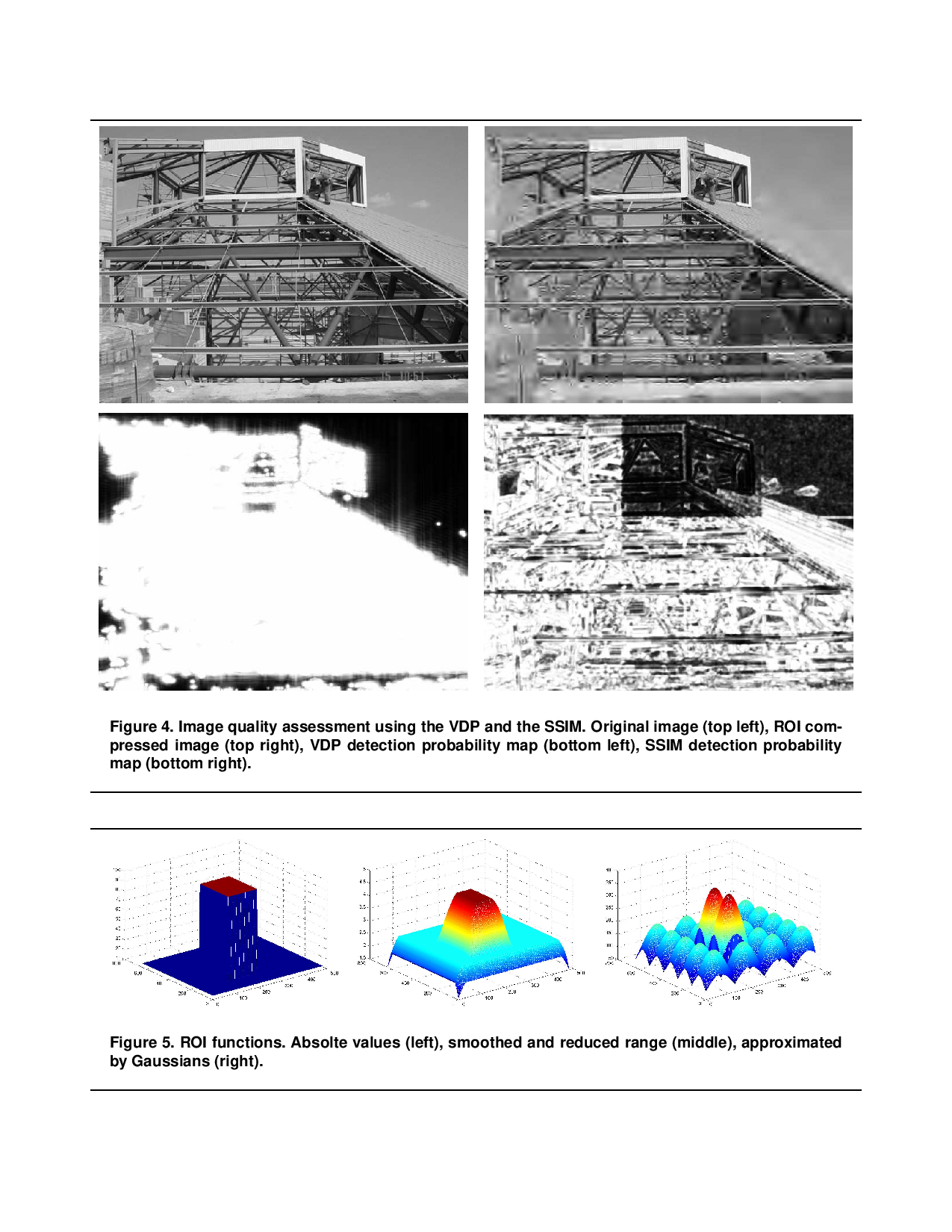Evaluation of Two Principal Approaches to Objective Image Quality Assessment
Proceedings of
International Conference on Information Visualisation, pp. 513-518, 2004
Nowadays, it is evident that we must consider human perceptual
properties to visualize information clearly and efficiently. We may utilize
computational models of human visual systems to consider human perception well.
Image quality assessment is a challenging task that is traditionally approached
by such computational models. Recently, a new assessment methodology based on
structural similarity has been proposed. In this paper we select two
representative models of each group, the Visible Differences Predictor and the
Structural SIMilarity index, for evaluation. We begin with the description of
these two approaches and models. We then depict the subjective tests that we
have conducted to obtain mean opinion scores. Inputs to these tests included
uniformly compressed images and images compressed non-uniformly with regions of
interest. Then, we discuss the performance of the two models, and the
similarities and differences between the two models. We end with a summary of
the important advantages of each approach.

